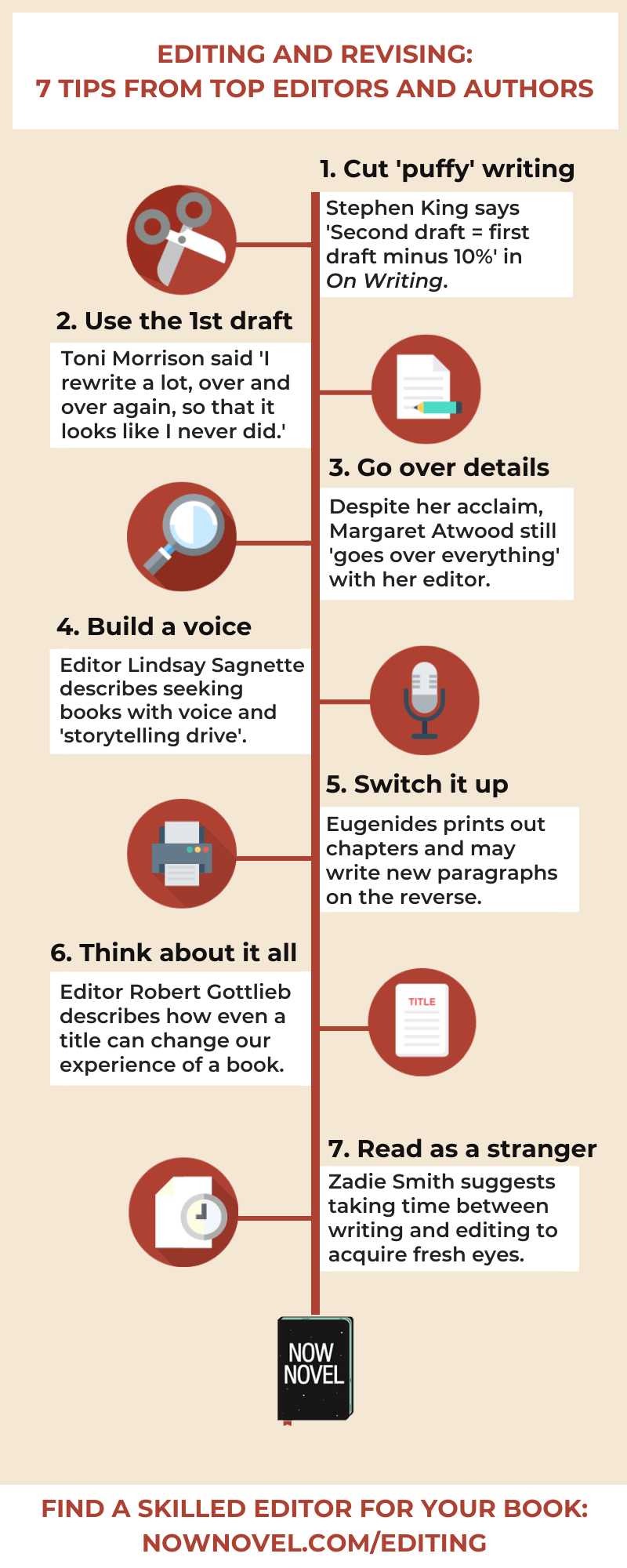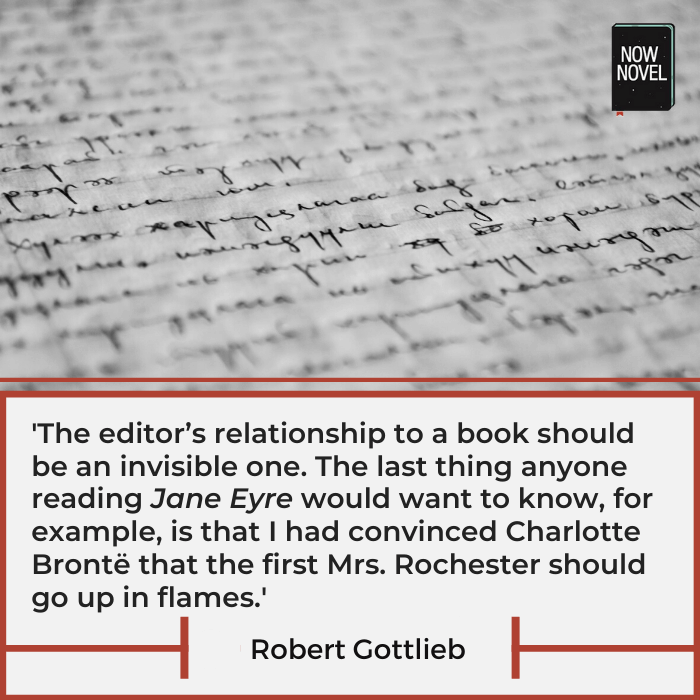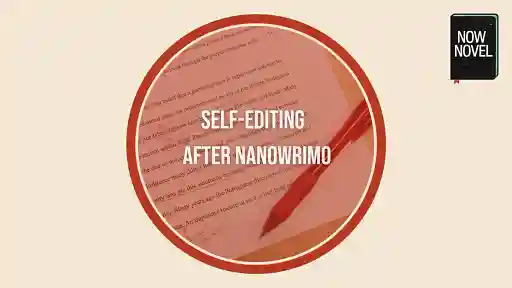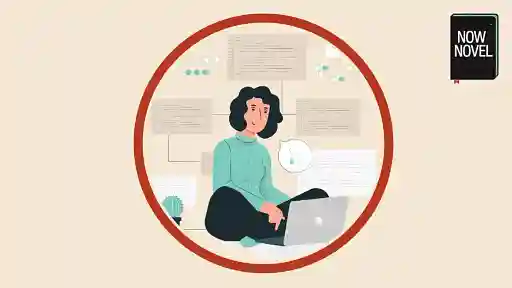Editing and revising are often seen as the 'slog' part of writing. Yet there is imagination and creativity in this stage of writing, too. Read 7 respected authors' and editors' ideas and methods:
1. Eliminate 'puffy' writing
In Stephen King's On Writing, King describes a useful note he received during his student years:
I got a scribbled comment that changed the way I rewrote my fiction once and forever. Jotted below the machine-generated signature of the editor was this mot: “Not bad, but PUFFY. You need to revise for length. Formula: 2nd Draft = 1st Draft – 10%. Good luck.
Stephen King, in On Writing: A Memoir of the Craft (2000).
It's true - cutting fluff is an important part of revising.
So what 'puffy' part of a story may be cut?
Some ideas:
- Long-winded exposition: Your reader probably won't care what your main character had for breakfast before the action starts (unless something unusual or relevant to what happens next)
- Tautology: We often repeat ourselves when writing rough drafts. Watch out for pleonasms (e.g. 'the frozen snow': 'Frozen' is implied by the word 'snow' already).
- Excess description: It's a matter of genre convention as well as personal taste whether you include lots of descriptive detail or a little. Cut lengthy description that doesn't give the reader specifics, mood or emotion.
2. Treat your first draft as groundwork
The late, great Toni Morrison, besides being a Pulitzer- and Nobel-winning author, was first a respected editor.
Here Morrison shares insights into the revision process:
The best part of it all, the absolutely most delicious part, is finishing it and then doing it over. That's the thrill of a lifetime for me: if I can just get done with that first phase and then have infinite time to fix it and change it. I rewrite a lot, over and over again, so that it looks like I never did. I try to make it look like I never touched it, and that takes a lot of time and a lot of sweat.
Toni Morrison in 'The Site of Memory', available here.
Like Morrison, give yourself the time to revise, to try new things and alternate takes.
3. Go over everything
Even highly accomplished authors like Margaret Atwood (who has won the Man Booker Prize twice, amongst other accolades) value working with editors.
When asked whether she can now tell editors 'to shove it' due to her prestige, Atwood shared this:
I would hate that because that would mean I could write the telephone book and everyone would say it was great. That is what you don't want. [...] We go through it page by page, on paper, not on a screen. There is a digital version in case we need to search the text: I use prestidigitation on Page 48 - do I use it twice? We go over everything: punctuation, word repetition, inconsistency of tone. It's not a hostile thing: We have the same goal in view, and that's to make it better.
Margaret Atwood, interviewed by Dawn Fallik for The Inquirer.
If you decide to self-edit at first rather than work with a professional editor, make a checklist of elements in your manuscript to revise. For example:
- SPAG (Spelling, Punctuation and Grammar). A good dictionary is essential, and there are many free options (e.g. Lexico powered by Oxford) online
- Style: Is your writing style consistent (e.g. you don't switch between formal and colloquial styles mid-sentence)? What style is appropriate for your genre or subject matter?
- Tone: Is your tone consistent? For example, if you have a 9-year-old narrator, does the narrator's voice stay this age (or evolve as they grow older in the story)?
The advantage of working with a skilled editor or book writing coach is that your revision will be thorough, leaving less to be fixed later.

4. Build a real voice
Many of the most memorable books captured hearts and minds thanks to the voices of a memorable protagonists. Even Regency and Victorian -era authors such as Charles Dickens and Jane Austen understood how a narrator with a memorable voice - a Phillip Pirrip or Lizzie Bennett - is able to carry a story.
Lindsay Sagnette, editor behind Gillian Flynn's breakout novel Gone Girl, shares this about the importance of voice:
If there are books that are really artfully put together—almost like architectural constructions—then I tend to run towards the ones that are emotional, and have a real voice and storytelling drive.
Lindsay Sagnette, quoted by Publishers Weekly
As you read your draft, ask yourself whether your characters' voices come through. Is there an underlying sense of:
- Where they're from
- Who they are
- What they believe, doubt, value, fear
We frequently return to Holden Caulfield from Salinger's Catcher in the Rye as an example of strong voice.
From the opening lines, we can hear Holden's voice; his jaded, world-weary teenage persona. Salinger's word choice (e.g. negative, casual words like 'lousy') adds to the effect:
If you really want to hear about it, the first thing you'll probably want to know is where I was born, and what my lousy childhood was like, and how my parents were occupied and all before they had me, and all that David Copperfield kind of crap, but I don't feel like going into it, if you want to know the truth.
J.D. Salinger, Catcher in the Rye (1951)
5. Switch up your editing and revising routine
Switching up your editing routine and doing something different is a good way to approach your work with fresh eyes.
Jefferey Eugenides describes to The Paris Review how he sometimes edits by hand:
I compose on the computer. Now and then, I print out what I’m working on and make handwritten corrections. There’s usually a period where I make corrections by hand, turn the page over, and write new paragraphs on the back of the sheet. I used to do that almost every day. It seems I do that less and less often. Now I can go as long as a month before printing something out. But there are always handwritten corrections at some point.
Jeffrey Eugenides, interviewed by James Gibbons in The Art of Fiction No. 215
Try printing out a section that's giving you difficulty and working on it this way.
Find other ways to switch up what you're doing (for example, revise in a different spot to your usual writing place). New environments and approaches may jog new ideas.

6. Think about each thing affecting the reading experience
Robert Gottlieb has edited some of the world's best-loved books, such as Joseph Heller's Catch-22.
In an interview for The Paris Review's 'The Art of Editing', he gives this great advice:
A lot of things one doesn’t usually think about can affect the reading experience. The way you structure the book, for example—whether you divide it into chapters or let it run uninterrupted, whether you give the chapters titles . . . Years ago I edited a wonderful novel that later became a successful movie, Lilith, by J. R. Salamanca. It was a powerful and affecting book, and the character who dominated it, who sparked it, was the character named Lilith, but she didn’t turn up at all in the first sixty or eighty pages. I don’t remember what the original title was, but I suggested to Jack that he change it to Lilith, because that way through all the opening pages of the book when Lilith hadn’t yet appeared, the reader would be expecting her. So just by changing the title one created a tension that wouldn’t have been there otherwise.
Robert Gottlieb, interviewed by Larissa MacFarquhar for The Paris Review
What if you introduce a character 10 pages earlier or later? What if you break a chapter at the highest point of tension rather after the resolution?
A skilled editor will help you decide how best to structure and shape your story into something better.
7. Read your work as a stranger would
In a brief piece for The Guardian, Zadie Smith shares the following two points of advice on editing and revising:
Try to read your own work as a stranger would read it, or even better, as an enemy would.
Leave a decent space of time between writing something and editing it.
Zadie Smith, 'Zadie Smith's Rules for Writers' in The Guardian
To read your work as a stranger would read it, you need to leave time for your own words to become less familiar.
Get a manuscript evaluation for a thorough, constructive and honest critique of your story so far.









Thank you! Editing and proofreading are my weak points. I'm not objective in what I write and it's hard to remove even one single word. This often makes my texts oversaturated or poorly structured. Your advice, or rather advice from truly talented authors, is very valuable for me.
Anna Darell - Over 4 years ago
Hi Anna, thank you for this feedback! It's good to know one's weak points; no harm in working with an editor if this part of the process is one you find challenging. That phrase about editing 'kill your darlings' is something I always try to remember when reading through a first draft.
Jordan - Over 4 years ago